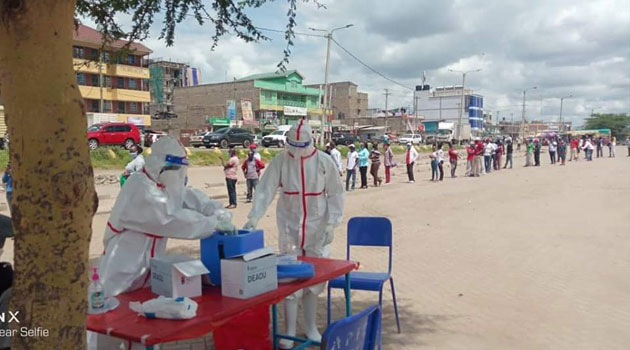
COVID burden eclipsed other epidemic-prone diseases since 2007: data » Capital News
NAIROBI, Kenya, Oct 29 – COVID-19 resulted in the highest number of deaths and cases recorded from epidemic-prone diseases from 2007 to 2022, a new surveillance report by the Ministry of Health has confirmed.
Following COVID-19, other diseases such as cholera, epidemic malaria, kala-azar, and measles contributed significantly to the country’s disease burden.
The report, authored by Farida Geteri and Samuel Kadivane of the Disease Surveillance and Response Unit at the Ministry of Health and other contributors, states that COVID-19 was a major driver of morbidity and mortality, accounting for 76 percent of reported cases and 86 percent of deaths.
Between 2007 and 2022, counties across Kenya reported a total of 464,008 cases of disease outbreaks and 6,575 deaths.
“COVID-19 was first detected in 2020, with the majority of cases recorded in 2021. All counties reported cases, with Nairobi leading at 145,766,” the report reads.
The report also highlights that Kenya experienced an annual cholera outbreak, except in 2011.
Garissa had the highest frequency of annual cholera reports, while Nairobi recorded the largest cumulative number of cases, totaling 6,623.
Out of 40,116 epidemic malaria cases recorded during the period, Elgeyo Marakwet reported the highest number, with 36,123 cases in 2020.
“Kala-azar cases were reported in 2014, 2016, and annually since 2019, with the highest number (2,858 or 49 percent) detected in Marsabit. Measles cases have been reported annually since 2012, with peaks in 2014, 2018, and 2020,” the report notes.
Most hepatitis B cases were recorded in 2019, with West Pokot having the highest caseload at 2,433 (47 percent).
The report classifies disease outbreaks into four categories, noting that COVID-19, cholera, epidemic malaria, kala-azar, measles, and Severe Acute Respiratory Infections (SARI) have a high disease burden, while typhoid fever, pertussis, rabies, and poliomyelitis are associated with the lowest burden.
457 outbreaks
A total of 457 outbreaks of 23 diseases were reported across all counties in Kenya from 2007 to 2022, the report circulated on Tuesday reveals.
It also highlights that at least one disease outbreak was reported annually during the surveillance period.
Each of Kenya’s 47 counties reported at least one outbreak, with Garissa, Nairobi, Nakuru, Wajir, Mandera, and Mombasa accounting for a quarter of the 457 reports.
“The average number of outbreaks per county was four. Nairobi recorded the highest number of cases and deaths across all outbreaks, comprising approximately one-third of cases and a quarter of deaths. Samburu reported the lowest number of cases, 331 (0.07 percent) over the surveillance period,” the report states.
The researchers note that variations in outbreak reports between counties reflect Kenya’s complex public health landscape. They add that frequent outbreaks of epidemic-prone diseases reveal vulnerabilities to significant disease events.
They also suggest that the rising number of reported outbreaks could be due to improved surveillance rather than an actual increase in disease occurrence.
The report recommends targeted, enhanced prevention, preparedness, and response interventions at the sub-national level to alleviate the outbreak burden.
Additionally, the prevalence of epidemic-prone diseases underscores the need for a robust early warning and response system to manage outbreaks effectively.
Surveillance in Kenya operates under the Integrated Disease Surveillance and Response (IDSR) strategy, adapted from the World Health Organization.
This strategy collects health data on multiple diseases and public health events using standardized tools, uploaded to the Kenya Health Information System (KHIS2) — a platform derived from the District Health Information Software 2 (DHIS2) that supports the aggregation and dissemination of health data.
About The Author